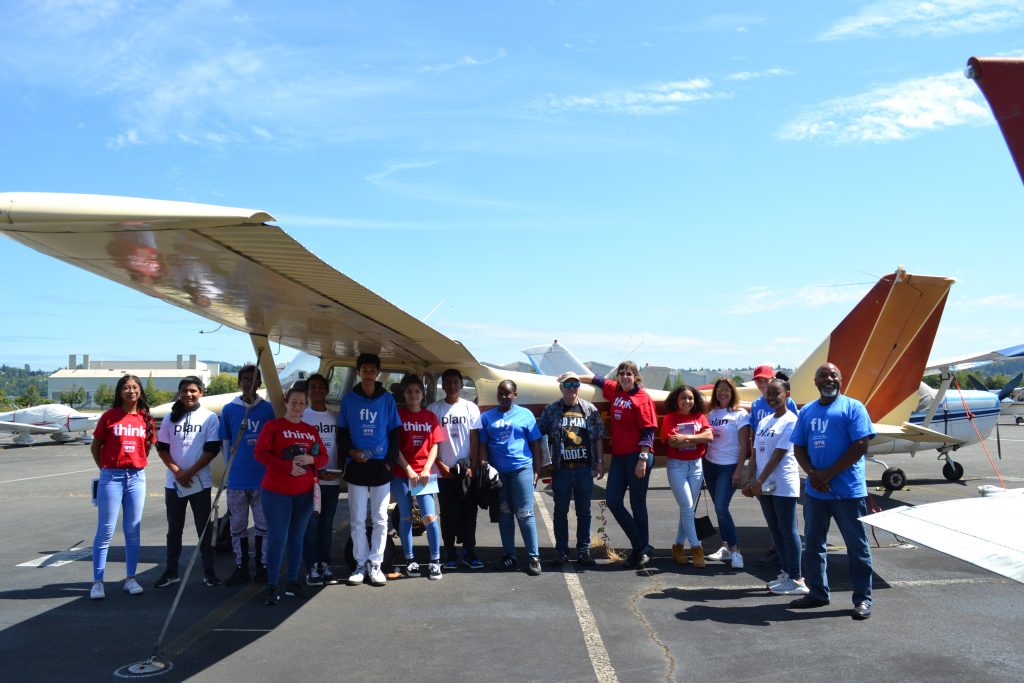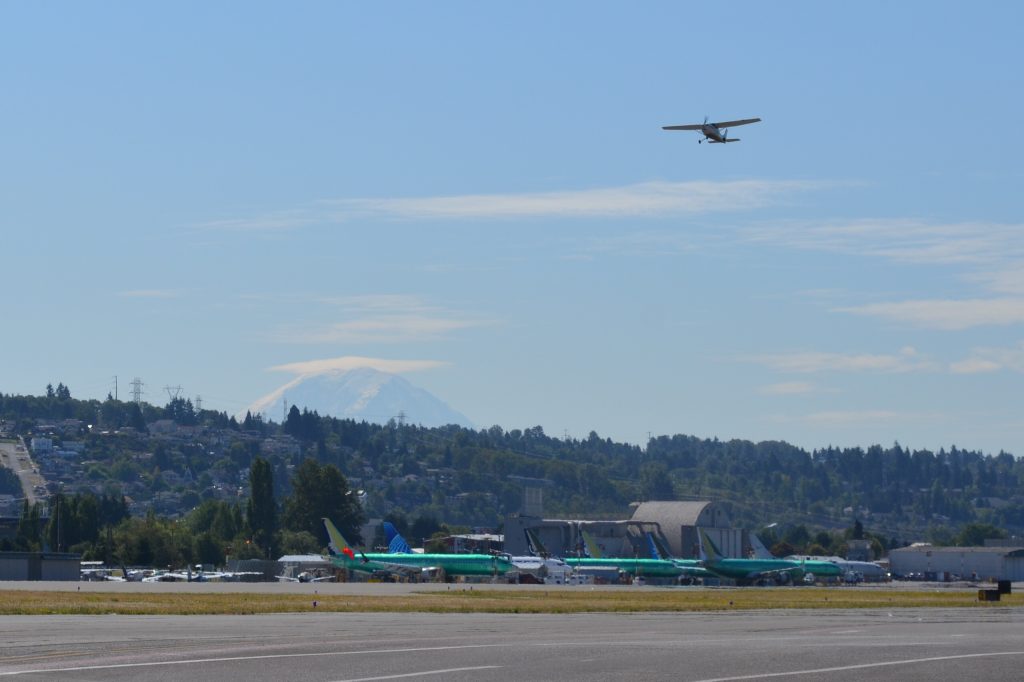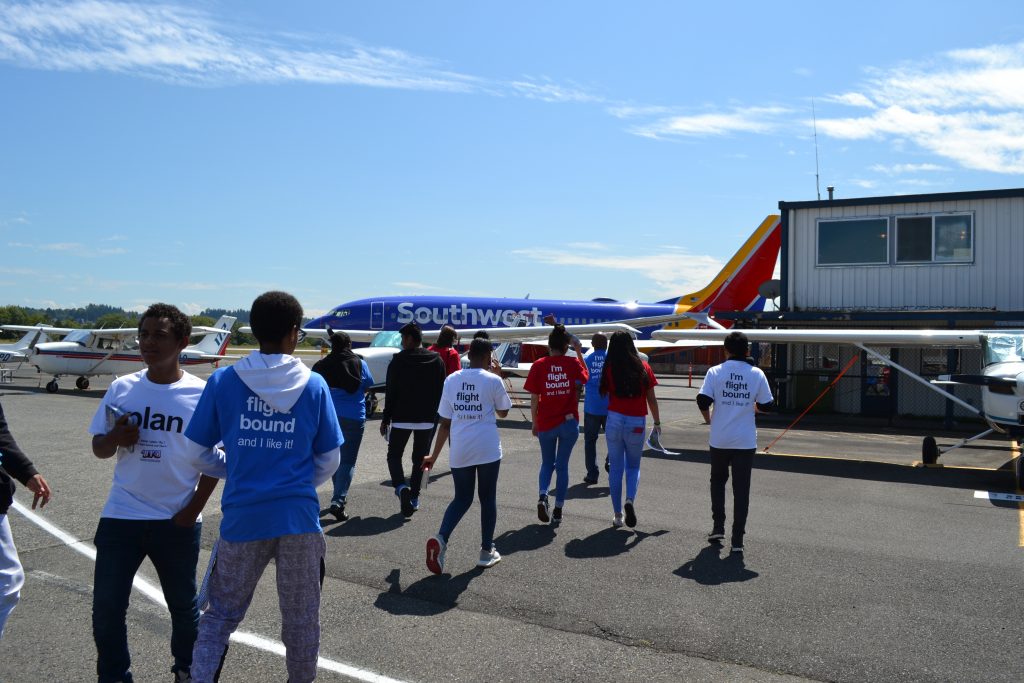A guest article by Devon Player.
For this flight, LightHawk partnered with Puget Soundkeeper and Unleash the Brilliance. Puget Soundkeeper works to preserve and protect the waters of Puget Sound. Unleash the Brilliance was founded to empower youth who are at risk of academic failure to positively engage with their education, their community, and their future. The alliance between Puget Soundkeeper and UTB is beneficial in allowing both groups to help each other accomplish their goals, and their partnership with LightHawk for this flight has allowed the two groups to strengthen the impact of their project.
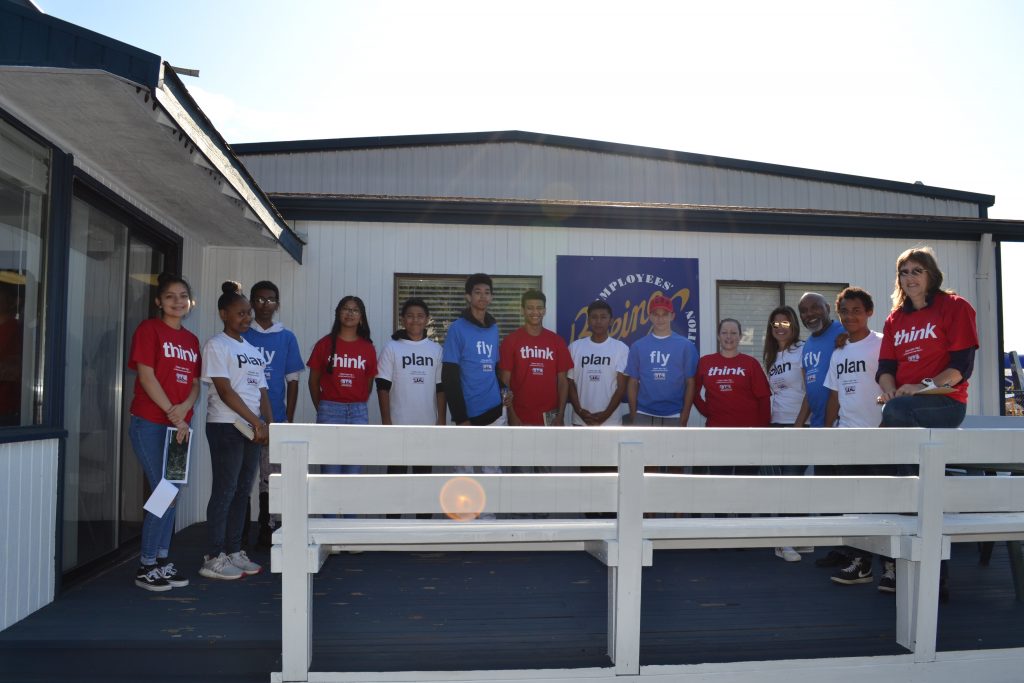
It was an incredibly unique experience talking with the students from UTB. At the beginning of the day, I sat down with Shania, Emanuel, and Sharlene. From speaking with these three students, I got an idea of what they have learned about the creek (Springbrook Creek) they will be flying over today, as well as the restoration work they have been able to help with this summer. They have learned about the general function and importance of the creek, the process of testing the water quality, and even the abundant plant life that surrounds the creek. However, some of the plant species (blackberry for example) are invasive and in addition to erosion and pollution from the surrounding city, Springbrook is in great need of restoration. They explained to me that they learned about all of this from studying different sections of the creek on the ground. Therefore, the opportunity to get an aerial view of the creek offers a whole new perspective. Every student I spoke with expressed excitement about this opportunity, as the hope is that the bird’s eye view they gain today will be extremely valuable to their understanding of the function of the creek as a whole.
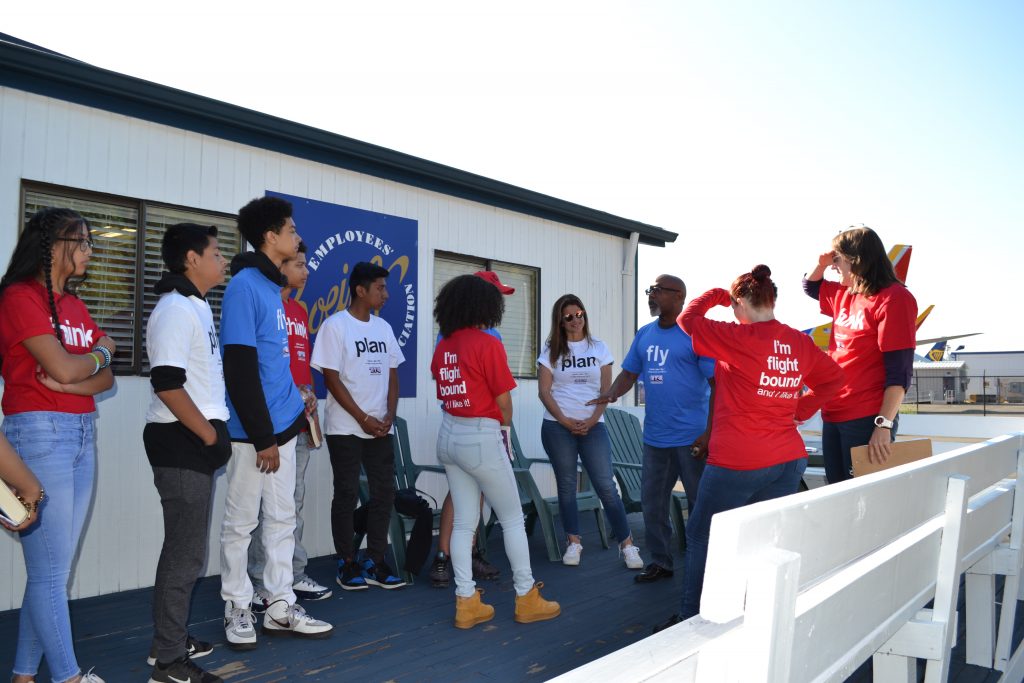
In their pre-flight discussion, the group talked about what they should anticipate seeing from the sky. They looked over a map of the area, split into five different sections to get a good grasp of what they are seeing while in the air. Landmarks such as the massive IKEA will help them keep track of where they are in relation to the map. This brought up discussion of how the creek is used by the city of Renton. Not only is Springbrook home to diverse plant and insect species, it is also part of Renton’s water supply. The interaction between the creek and the city is another thing that the students are hoping to get a better visual of as they head into the air.
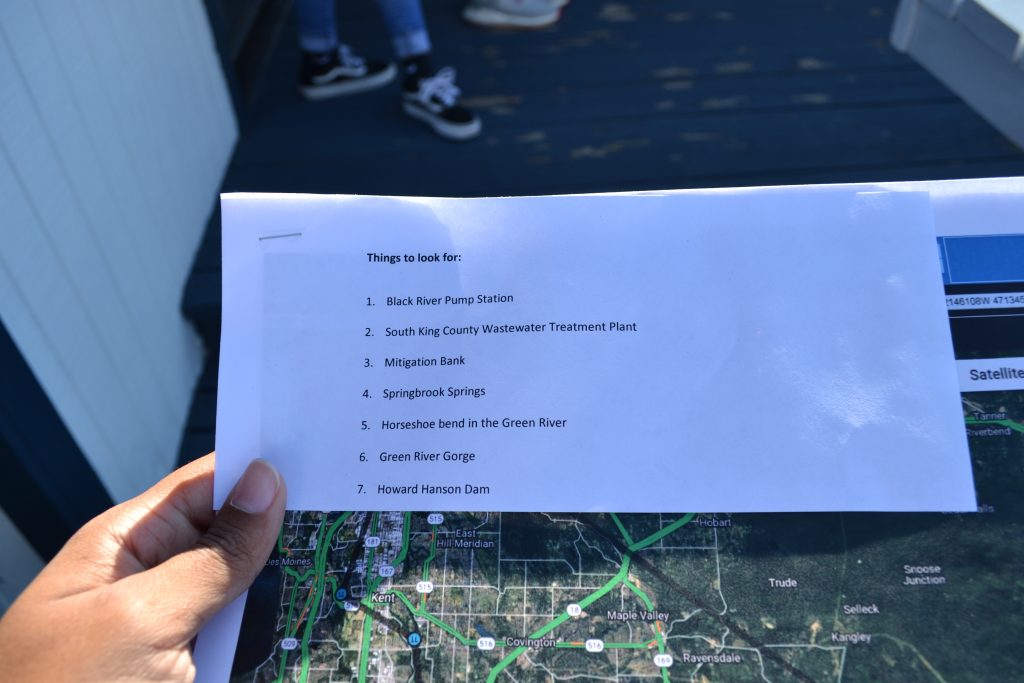
In my opinion, the most impressive part of the discussion was seeing the collaboration between the students and the pilots. The pilots were able to set realistic expectations for the flight, including how quickly they will fly over each of the five sections of the creek and what they should be able to see in that time. The students were then able to use the maps to discuss with the pilots specific things they were hoping to see while on the flight. The pilots were then able to adjust their flight paths so that the students would be able to see exactly what they were hoping to look at from the sky.
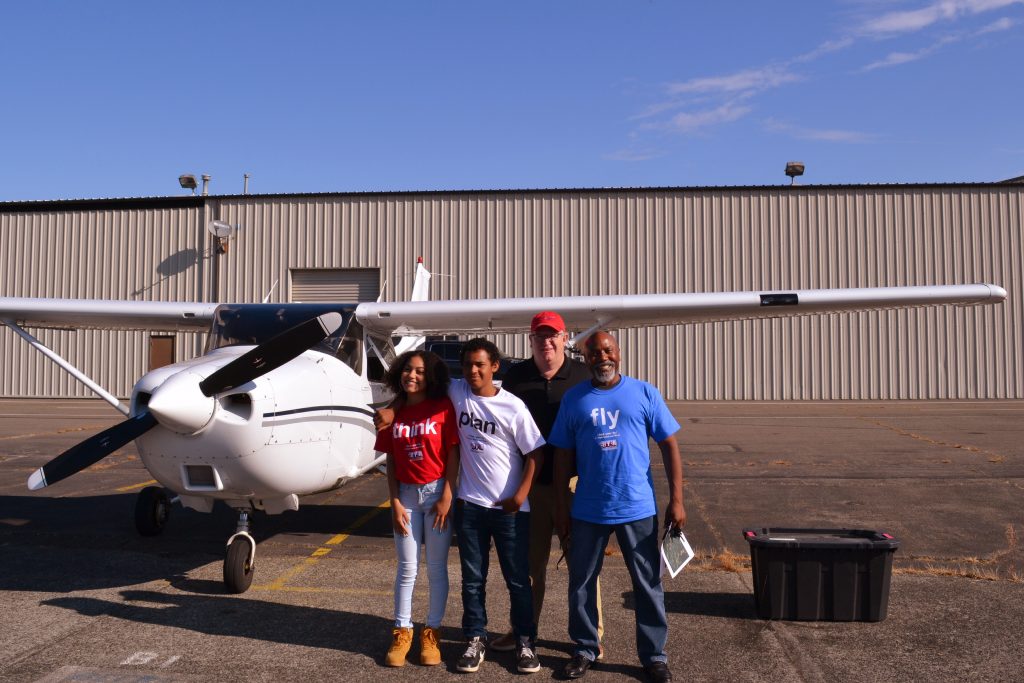
Ready for take off 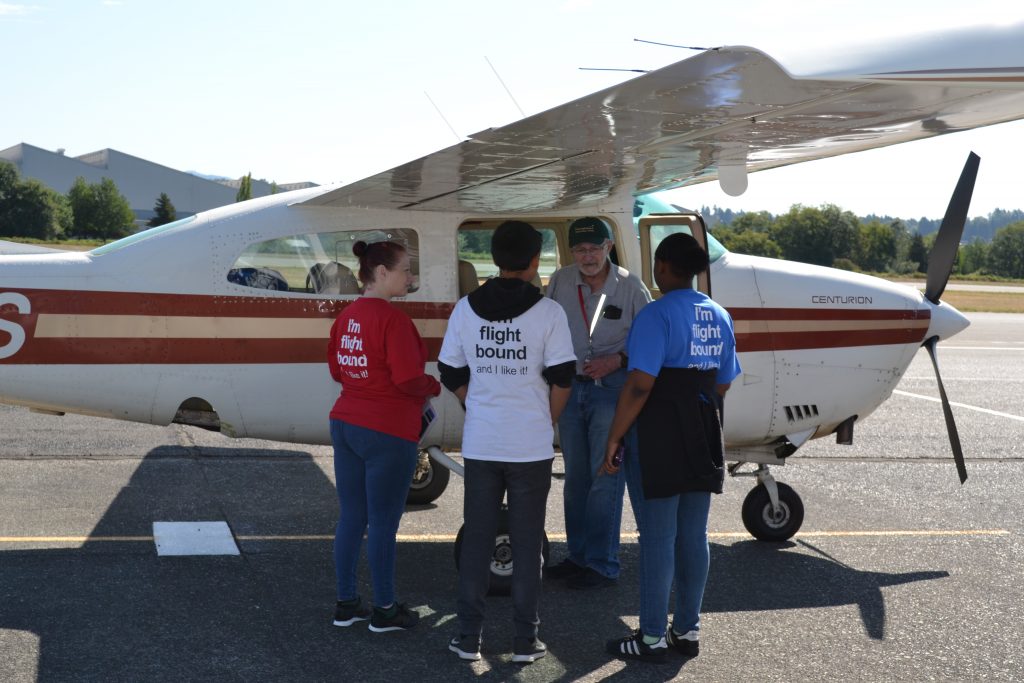
Safety talk 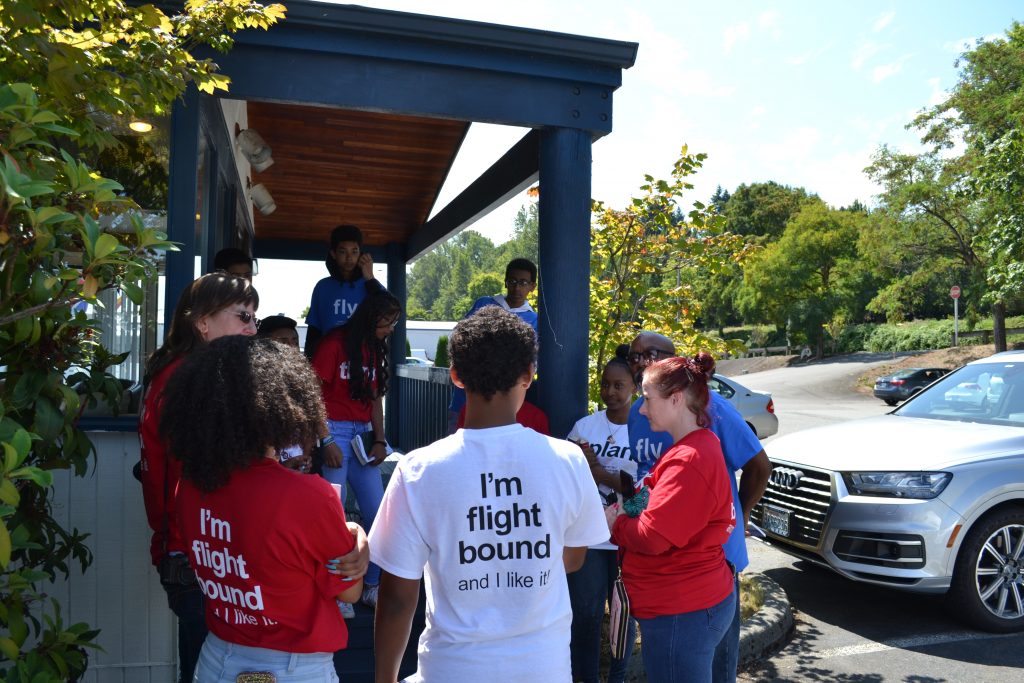
Flight debrief
What I hadn’t realized until after the groups returned from their flights, was that going up in a plane this small was a completely new experience for almost everyone there. Though it left some of the students a little nauseated, they were all eager to share their observations with each other. After everyone had returned from their flights, the group had a small debrief. Each person shared one “aha moment” and one new thing they learned. Many of the students were surprised by the amount of vegetation surrounding the creek. A few of the students were eager to share that they were able to identify a second dam that they hadn’t noticed from studying the creek prior to the flight. Listening to the debrief following the flight, it was clear that each of the students had gained a perspective that added something new to their understanding of the creek and made them even more proud of the project to which they had all contributed.
Even as only a bystander, I learned so much about the importance of protecting Springbrook Creek and the value of adding this aerial perspective to the students’ comprehensive understanding of the work to which they have contributed. I was kind of a fly on the wall for many of the discussions between members of the group today, and the overarching theme of gratitude and excitement is what seemed to embody the entire experience. It was obvious to me that this flight not only educated the students, but inspired them, too.
“Think. Plan. Fly.” is the UTB motto and this experience allowed each of the students to do just that. I think these flights were not only enriching for the students, but for everyone involved in this inspiring collaboration.

